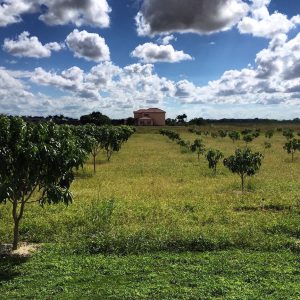Tropical Fruit at a Glance—Mango
By Jeff Wasielewski, Laura Vasquez and Jonathan H. Crane
Common name: Mango
Botanical name: Mangifera indica
Family: Anacardiacae
Good varieties: Angie, Orange Sherbet, Glenn, Nam Doc Mai, Rosigold, and more
About the fruit: The mango has been called the king of fruit. There are over 1,000 different cultivars with flavors ranging from the very sweet to robust. The fruit is eaten fresh, as well as, used in chutney, dried, and in smoothies.
Season: Main season is June through August.
Why you should consider it: The tree has very few pest and disease problems and readily produces fruit. With over 1,000 different cultivars, there is a mango flavor for everyone.

Be aware: The mango is in the same family as poison ivy, so the sap can cause dermatitis if you are not careful. Look out for anthracnose and powdery mildew when the trees are blooming.
Pruning: The mango takes very well to pruning and can be kept at 12 to 15 feet through annual selective pruning. Remove strong verticals and encourage lateral growth.
Planting: Make sure not to plant too deep. Dig the hole bigger than the container but refill the hole with the native soil so the plant’s first flare root is at or just above ground level. Protect the tree from mechanical damage (string trimmers and mowers).
Fertilizer: Use a fertilizer with very low nitrogen and high potassium two to three times during the rainy season (May to October). Drench with chelated iron (EDDHA) and use a micro-element foliar spray two to three times from May to October.
For more information see: Mango growing in the Florida home landscape: https://edis.ifas.ufl.edu/mg216.
 1
1
